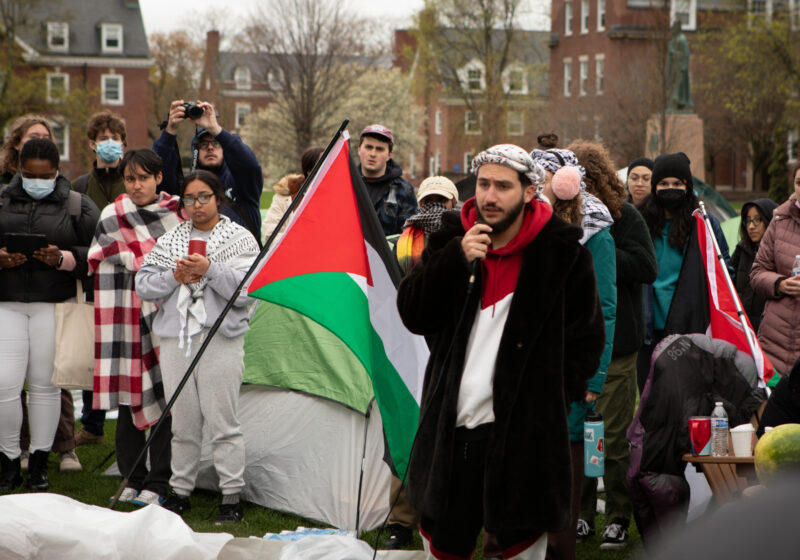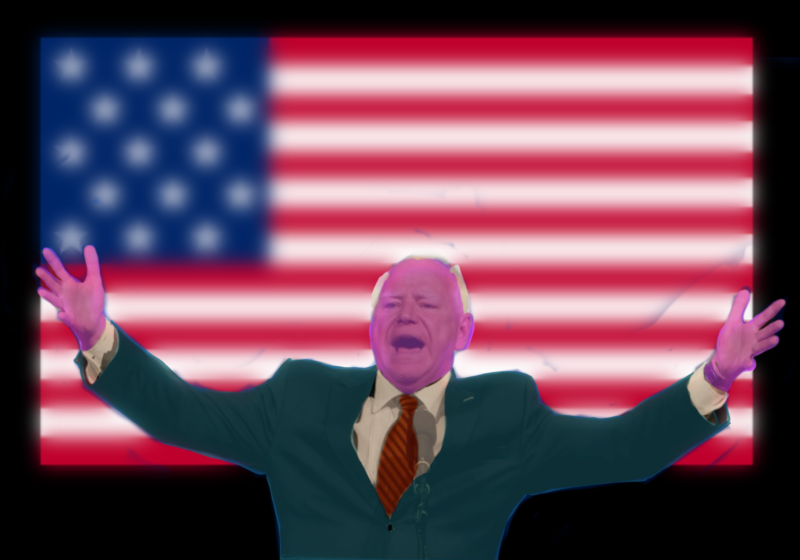On Thursday, Oct. 15, University President Joel Seligman announced that Dean of the Hajim School of Engineering and Applied Sciences and Senior Vice President for Research Robert Clark would become UR’s next provost. The audience of the press conference, which was held in the Simon School of Business Administration’s Eisenberg Rotunda, was made up of Board of Trustees members, senior administrators and faculty.
“We will continue in our efforts to embrace diversity of all kinds in engineering and our other domains of study here at [UR],” Clark said, adding, “diversity of thought, gender, culture, race, etc. all contribute to a wonderful richness in our learning environment.”
“Rob has been a key part of our recent progress,” Seligman said. Seligman recounted that Clark’s accomplishments at the Hajim School include the doubling of enrollment in the Hajim School since Clark took over in 2007; the integration of Computer Science into the Hajim School; the creation of an fabrication lab in Rettner Hall; the coordination of Wegmans Hall, which is currently under construction; and the creation—alongside Professor Duncan Moore—of the over 700-page document delivered to the Department of Defense, which, according to Seligman, was “the basis of us succeeding in this national contest [for the Integrated Photonics Institute].” Seligman noted that “Rob’s role in photonics is going to be one that will continue and will be quite consequential—as will be clearer—in the days to come.”
Among other things, Seligman gives Clark credit for “[demonstrating] a gift for assembling strong leadership teams,” and eagerness, upon his appointment as Senior Vice President for Research “to seek an office in the Medical Center, to try to better coordinate our research efforts on both sides of Elmwood.”
“I feel greatly privileged to have the opportunity,” Clark said. “I have spent a lot of my time, obviously, in the sciences, engineering, the technology, the research strategic plan. You have probably little known that I also play music and care a lot about the humanities and the social sciences and have always looked for links for engineering in that space, but I am so blessed to have the opportunity now to work across all of these schools, and to really embrace all of these domains that I have not had the opportunity to do so far. So, […] from my perspective, […] serving in this role is having a seat for an intellectual buffet. And, I can just cruise through and look at all of the wonderful things that are there. I just have to watch my diet—it also has some eating responsibilities with it too.”
Clark will participate in a listening tour to prepare for his assumption of the role of provost. As Clark stated, he will be using it “as an opportunity to gain perspective of our collective aspirations and goals.”
According to Seligman, the role of Chief Academic Officer is the provost’s most important, and “is one of enormous consequence.”
Seligman did not mince words when it came to the provost’s role. After stating that the provost is “equivalent to the vice president,” Seligman went on to note that he has “told Peter [Lennie] to make sure I look both ways before I cross streets. In effect, the expectation is if anything untoward were to happen, that the provost would instantly become the interim president, and then, I would expect at this University, we would have a national search.”
According to the Democrat & Chronicle, when Seligman underwent surgery in May 2014, Lennie was in charge of the operations of the University. Howard Anderson was acting president from May 1960 to February 1961, and Provost McCrea Hazlett was the acting University president between the de Kiewiet and Wallis presidencies.
“The role of provost at this University is important for a number of reasons,” Seligman noted. “But, one of the things that I have particularly enjoyed working with Peter [Lennie] and Ron Paprocki on is what we call ‘The Troika.’ And, this is a ‘gang of three,’ if you will, that is focused on reviewing every budget, reviewing strategic plans, reviewing facilities projects above or of a certain size and I have asked that Rob start joining our meetings for the balance of this year as part of his preparation.”
Clark was recruited to UR by Lennie, and joined UR in 2008. Since then, he has served as Dean of the Hajim School. Clark was named Senior Vice President for Research in June 2012.
The role of Senior Vice President for Research grew out of a restructuring of the role of provost, which occurred when the eighth provost of the University, Ralph Kuncl, was succeeded by Lennie. The restructuring also combined the functions of the role of UR Provost and Dean of the Faculty of Arts, Sciences and Engineering.
The June-August 2012 Rochester Review quotes Seligman as stating that “This new structure will more effectively address the provost’s role in our decentralized university governance model as well as the ongoing expansion of the research side of the Office of the Provost,” and that “[The restructuring] will simplify and clarify responsibility, reduce an administrative level, and achieve some synergies by combining the provost’s academic functions and the position of Dean of the Faculty of Arts, Sciences and Engineering and by creating a senior vice president to oversee the expanding responsibilities for research.” This week, Seligman stated that the separation between the two positions “may make sense for [Clark’s] successor particularly if the responsibilities of the positions increase.”
In a September-October 2008 Rochester Review, Clark stated: “I really believe that science and engineering are going to be critical to policy decisions as we move forward.” He added that “As with anything that separates two cultures, it’s understanding that helps them communicate better. And it’s our responsibility to give non-engineering students the background they need to understand the way engineers think.”
Clark clarified his current position on the issue this week, stating, “I believe engineering students need perspective afforded through studies in the humanities and social sciences, and I believe that humanities, science and social science students benefit from perspective in domains of engineering and technology.”
Since the establishment of the Office of the Provost in 1948, Clark is only the second provost to have come from an engineering background. Provost Emeritus Brian Thompson, who was provost from 1984 to 1994, was a Professor of Optics and was later Director of the Institute of Optics and Dean of Engineering. Of the eight other provosts to precede Clark—besides Thompson—four have had formal backgrounds in the natural sciences; two with backgrounds in Brain & Cognitive Sciences, and one chemist and one physicist.
“In our ‘Troika,’ in our deliberations generally, Rob is the keeper of the flame,” Seligman explained. “He will never let us forget, as Peter has never let us forget, that we are first and foremost an academic institution where faculty matter enormously, where students matter enormously, where our mission is the transmission and development of knowledge.”
Schaffer is a member of
the class of 2016.

